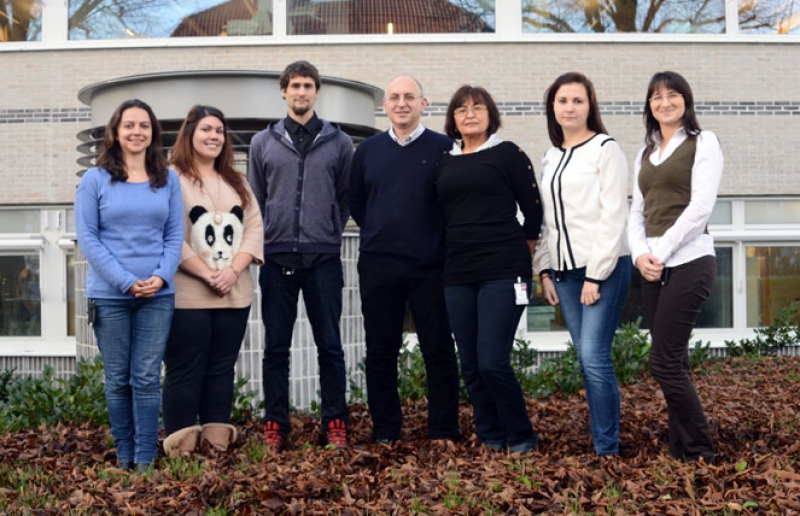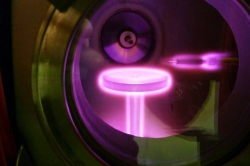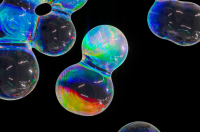Development of new materials with unique properties is today one of the top priorities for researchers. Now that nanotechnologies are being developed rapidly, qualitatively new hybrid materials with an expanded range of functional properties can be obtained.
Spider silk has long been considered one of the most interesting biological components for creating new materials. Consisting of protein molecules, long chains made of thousands of amino acids, it offers a much better quality than its artificial counterparts. Spider silk fiber has areas where several protein chains are connected via stable chemical bonds, which ensures its strength, while areas between these compounds ensure its high elasticity.
In addition to that, spider silk has a range of interesting biological properties: it is biocompatible, has high values of cell growth factors and their adhesion, and its proteins are genetically adaptive. All this makes spider silk a potential candidate for medical applications, for example, in surgery and transplantology.
Depending on the type of nanoparticles used for their modification, functional hybrid materials can acquire new properties needed for a particular application.

As a result of successful collaboration between scientists from ITMO University’s SCAMT Laboratory and the research group led by professor Vadim Kessler and associate professor Gulaim Seisenbaeva from the SLU University (Sweden), biocomposites made of spider silk proteins and hafnium and zirconium oxide nanoparticles doped with rare-earth ions have been developed. The researchers have shown that hybrid materials made of spider silk fiber and coated with a uniform layer of inorganic nanoparticles can be optically active while remaining strong and elastic. Apart from that, the researchers have managed to prove that the resulting composites are biologically compatible.
“Our task was to come up with the easiest, cheapest and safest way of creating hybrid materials. Our research indicates that this can be done with the use of hafnium and zirconium oxides doped with rare-earth elements. When it comes to biovisualization technologies, there are certain methods that suggest using toxic optical agents, which must first be coated with special shells. We, in our turn, wanted to avoid using any denaturing agents or additional shells, and at the same time create biocompatible, safe composites,” says Alexandra Kiselyova, the first author of the article, a staff at ITMO University’s SCAMT international laboratory.
The obtained composite fibers can be used as a highly sensitive visualizing material through harnessing the upconversion effect that allows to transmit low-energy radiation from the near-infrared part of the spectrum (which is safe for living organisms) into high-energy radiation in the visible range of light. The scientists have expanded the upconversion properties of nanoparticles to macro-scale components in order to produce optically active web-based composite materials.
Thus, the modification of the spider silk using upconversion particles opens up the possibility for non-invasive detection and visualization of biomaterials in real-time mode. The developed material can pave the way to modern biomedical technologies, the authors of the study add.

An insectarium was created specifically for the research and development of new materials at SCAMT laboratory; about 60 spiders of two species, Linothele fallax and Holothele incei, live there. As the researchers explain, these species were chosen because of the volume of the silk they produce. Insects at the insectarium are kept in conditions as close to their natural habitat as possible: on a special substrate, at certain humidity and temperature levels necessary for a particular species.
In the future, scientists plan to further develop their area of research, as well as continue to study the properties of spider silk in order to be able to fully reproduce its unique properties. Specialists around the world continue to discover new properties of this natural material. That’s why this topic is especially relevant today, adds Alexandra Kiselyova.
Reference: Optically Active Hybrid Materials Based on Natural Spider Silk, Aleksandra Kiseleva, Grigorii Kiselev, Vadim Kessler, Gulaim Seisenbaeva, Dmitry Gets, Valeriya Rumyantseva, Tatiana Lyalina, Anna Fakhardo, Pavel Krivoshapkin, Elena Krivoshapkina, ACS Applied Materials & Interfaces, DOI: 10.1021/acsami.9b05131, 2019




